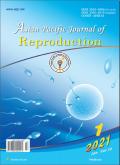泰国三级医院预防早产普遍宫颈长度筛查障碍的实施研究:卫生保健管理人员的观点
IF 0.6
Q4 REPRODUCTIVE BIOLOGY
引用次数: 0
摘要
目的:了解医疗保健管理人员对实施宫颈长度筛查以预防早产的障碍的看法。方法:在第一阶段,对10名医疗保健管理人员进行了访谈。第二阶段包括问卷编制和数据验证。在第三阶段,对40名参与者进行了问卷调查,并对他们的回答进行了分析。结果:他们的平均相关工作经历为(21.0±7.2)年;39名(97.5%)受访者也在各自的医院承担医疗管理职责。据报道,大多数医院都有足够的产科医生(31例,77.5%),能够准确测量宫颈长度(22例,55.0%)。然而,没有为普及宫颈长度筛查拨款(39例,97.5%)。大多数受访者认为,根据公共卫生部的政策,实施普及筛查,将预防早产(28例,70.0%)。此外,他们建议免除宫颈长度测量的住院费(34例,85.0%)。确定了三级医院普遍筛查的三个主要障碍。产科工作量大(20例,50.0%);医务人员数量不足(24例,60.0%);不相信筛查测试可以预防早产(8例,20%),高危病例缺乏免费药物支持预防早产(29例,72.5%)。结论:普及宫颈长度筛查的主要障碍是工作人员工作量大,政府对超声扫描和激素治疗的资助不足。医疗保健管理人员不认为普遍的宫颈长度筛查有助于减少早产。本文章由计算机程序翻译,如有差异,请以英文原文为准。
An implementation study of barriers to universal cervical length screening for preterm birth prevention at tertiary hospitals in Thailand: Healthcare managers’ perspectives
Objective: To identify healthcare managers’ perspectives on the barriers to implementing cervical length screening to prevent preterm births. Methods: In Phase I, 10 healthcare managers were interviewed. Phase II comprised questionnaire development and data validation. In Phase III, the questionnaire was administered to 40 participants, and responses were analyzed. Results: Their average related work experience was (21.0±7.2) years; 39 (97.5%) respondents also had healthcare management responsibilities at their respective hospitals. Most hospitals were reported to have enough obstetricians (31 cases, 77.5%) and to be able to accurately perform cervical length measurements (22 cases, 55.0%). However, no funding was allocated to universal cervical length screening (39 cases, 97.5%). Most respondents believed that implementing universal screening, as per Ministry of Public Health policies, would prevent preterm births (28 cases, 70.0%). Moreover, they suggested that hospital fees for cervical length measurements should be waived (34 cases, 85.0%). Three main perceived barriers to universal screening at tertiary hospitals were identified. They were heavy obstetrician workloads (20 cases, 50.0%); inadequate numbers of medical personnel (24 cases, 60.0%); not believing that the screening test could prevent preterm birth (8 cases, 20%) and lack of free drug support for preterm birth prevention in high-risk cases (29 cases, 72.5%). Conclusions: The main obstacles to universal cervical length screening are heavy staff workloads and inadequate government funding for ultrasound scanning and hormone therapy. The healthcare managers do not believe that the universal cervical length screening can help to reduce preterm birth.
求助全文
通过发布文献求助,成功后即可免费获取论文全文。
去求助
来源期刊

Asian Pacific Journal of Reproduction
Veterinary-Veterinary (all)
CiteScore
1.70
自引率
0.00%
发文量
588
审稿时长
9 weeks
期刊介绍:
The journal will cover technical and clinical studies related to health, ethical and social issues in field of Gynecology and Obstetrics. Articles with clinical interest and implications will be given preference.
 求助内容:
求助内容: 应助结果提醒方式:
应助结果提醒方式:


